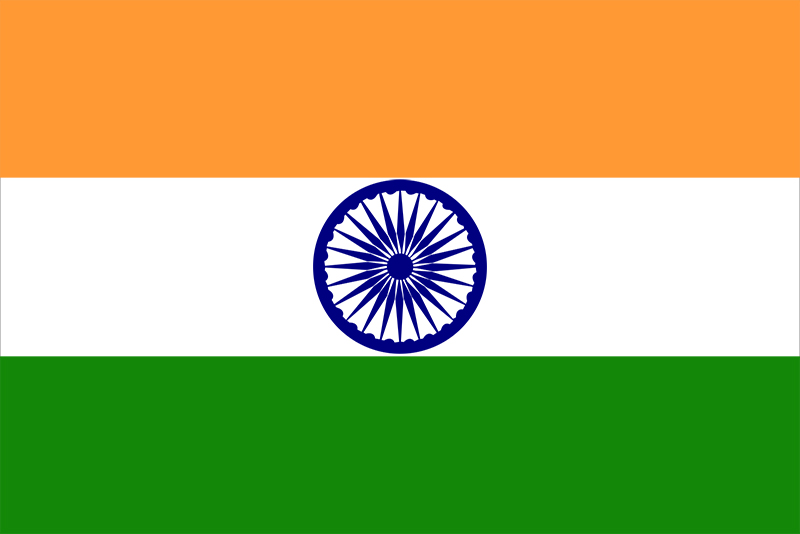https://www.iisc.ac.in/
The brain child of Jamsetji Nusserwanji Tata, a successful businessman and philanthropist, the Indian Institute of Science (IISc) was conceived in the late 1800s. To this end, Tata set up a provisional committee under the leadership of Burjorji Padshah, an educationist, to come up with a blueprint for the proposed university. The committee drafted a plan which went through several iterations before it was finalised. Tata also endowed a substantial part of his personal wealth for this ambitious project.
Unfortunately, Tata died in 1904, well before the Institute came into existence. It was eventually established, through a vesting order passed on 27 May 1909 by the Indian Government, in the southern city of Bengaluru on 371 acres of land donated by the Mysore Durbar.
The Institute which started with just two departments – General and Applied Chemistry and Electrical Technology – today has over 40 departments spread across six divisions: Biological Sciences, Chemical Sciences, Electrical Sciences, Interdisciplinary Research, Mechanical Sciences, and Physical and Mathematical Sciences. It also has a new campus at Challekere in Chitradurga district in Karnataka.
https://www.iitsystem.ac.in/
https://www.education.gov.in/hi/institutions-national-importance-hi
The history of the IIT system dates back to 1946 when Sir Jogendra Singh of the Viceroy's Executive Council set up a committee whose task was to consider the creation of Higher Technical Institutions for post-war industrial development in India. The 22-member committee, headed by Nalini Ranjan Sarkar, recommended the establishment of these institutions in various parts of India, along the lines of the Massachusetts Institute of Technology, with affiliated secondary institutions.
The first Indian Institute of Technology was founded in May 1950 at the site of the Hijli Detention Camp in Kharagpur, West Bengal. The name "Indian Institute of Technology" was adopted before the formal inauguration of the institute on 18 August 1951 by Maulana Abul Kalam Azad. On 15 September 1956, the Parliament of India passed the Indian Institute of Technology (Kharagpur) Act, declaring it as an Institute of National Importance. Jawaharlal Nehru, first Prime Minister of India, in the first convocation address of IIT Kharagpur in 1956 said:
Here in the place of that Hijli Detention Camp stands the fine monument of India, representing India's urges, India's future in the making. This picture seems to me symbolical of the changes that are coming to India.
On the recommendations of the Sarkar Committee, four campuses were established at Bombay (1958), Madras (1959), Kanpur (1959), and Delhi (1961). The location of these campuses was chosen to be scattered throughout India to prevent regional imbalance. The Indian Institutes of Technology Act was amended to reflect the addition of new IITs. Student agitations in the state of Assam made Prime Minister Rajiv Gandhi promise the creation of a new IIT in Assam. This led to the establishment of a sixth institution at Guwahati under the Assam Accord in 1994. In 2001, the University of Roorkee, India's oldest engineering college, was converted into IIT Roorkee.
Over the past few years, there have been a number of developments toward establishing new IITs. On 1 October 2003, Prime Minister Atal Bihari Vajpayee announced plans to create more IITs "by upgrading existing academic institutions that have the necessary promise and potential". Subsequent developments led to the formation of the S K Joshi Committee, in November 2003, to guide the selection of the five institutions which would be converted into IITs. Based on the initial recommendations of the Sarkar Committee, it was decided that new IITs should be spread throughout the country. When the government expressed its willingness to correct this regional imbalance, 16 states demanded IITs. Since the S K Joshi Committee prescribed strict guidelines for institutions aspiring to be IITs only seven colleges were selected for final consideration. Plans are also reported to open IITs outside India, although there has not been much progress in this regard. Eventually in the 11th Five year plan, eight states were identified for establishment of new IITs.
In 2008 to 2009, eight new IITs were set up in Gandhinagar, Jodhpur, Hyderabad, Indore, Patna, Bhubaneswar, Ropar, and Mandi. Following same selection process since 1972, in 2012 the Institute of Technology, Banaras Hindu University was made a member of the IITs and renamed as IIT(BHU) Varanasi.
In 2015 to 2016, six new IITs in Tirupati, Palakkad, Dharwad, Bhilai, Goa and Jammu, approved through a 2016 bill amendment, were founded, along with the conversion of Indian School of Mines Dhanbad into IIT(ISM) Dhanbad.
The entire allocation by the central government for 2017-18 budget for all Indian Institutes of Technology (IITs) was slightly over ₹70 billion (US$980 million). However, the aggregate money spent by Indian students for tertiary education in the United States was about six times more than what the central government spends on all IITs.
Offices
ANDHRA PRADESH
F-15, Srivenkatesham
3rd Line, Gardens
Guntur 522001, AP
TENALI
Srikrishna Bhavan, After Paladri Canal, Burripalem Road, Tenali, Guntur dt 522201, AP, India
BENGALURU
Coming Soon

